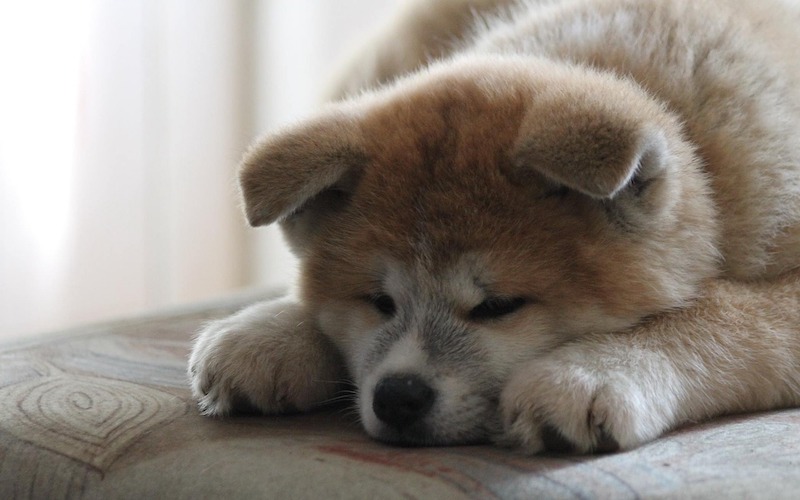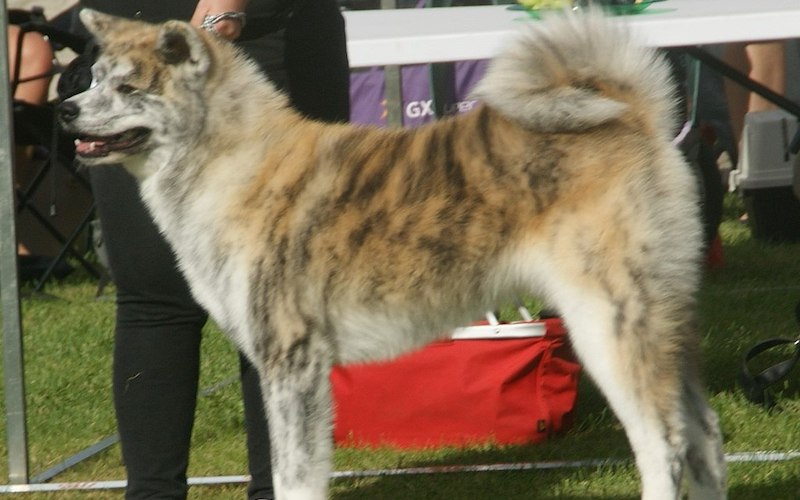The Japanese Akita is a large, powerful dog that was first bred to pull sleds in the frigid northern regions of Japan. The breed shares its ancestry with the Shiba Inu and is often mistaken for it because of their striking similarities.
What does a Japanese Akita look like?
Akitas possess characteristics from both spitz-type dogs and hound breeds. They have a luxurious red double coat with black tips on their fur, although it can appear as blue or copper if it is wet. Some Akitas have darker coats, but they never have more than 50% white hair on their body. Faint yellow eyes are another feature that the breed possesses in common with the Shiba Inu; however, Akitas have a much more serious expression than their cousins.
Size of the Japanese Akita
The Akita is a large dog that can grow to stand as tall as 26 inches when it’s fully grown, and they weigh 165 pounds or more when they’re full grown. The size of these dogs makes them intimidating; however, they are gentle giants that possess the desire to please their owner and friendliness toward other animals.
You will need to consider the size of a fully grown Akita when purchasing a crate for akita puppy dogs.

Training a Japanese Akita
The breed is not as easy to train as other dogs because of its stubborn and independent nature, but it is highly intelligent and possesses the desire to please its owner. Akitas are one of the few dog breeds that do better when trained using positive reinforcement techniques (treat or reward for good behaviour). Their domestication made them one of the most devoted dog breeds that you will find in the world.
History of the Breed
The Japanese Akita was brought to North America by Helen Keller after World War II because she wanted to share her companion, a female named Yo-Chan with other people because Yo-chan helped her through difficult times such as the loss of her eyesight. The Akita breed was not recognised by the American Kennel Club until 1972.
The Akita was bred to hunt bear, boar, and other large game in Japan. It is extremely territorial of its master but not necessarily hostile toward strangers unless it has been mistreated in the past. The breed is well-known for guarding their territory fiercely and they will protect it against all threats, whether they are real or imagined.
The Akita is one of the most popular breeds in Japan and it can be found across the world as a guard dog and companion pet. Although they are slowly gaining popularity, these dogs still reside at number 73 on the American Kennel Club’s list of most popular dog breeds.
Good Guard Dogs
The breed tends to bark when it senses its master is under attack and will chase away any intruders until the threat has disappeared. Akitas tend to show aggression towards other dogs and animals that encroach upon their territory, although this behaviour can be improved with proper training as puppies. The behaviour is also improved by frequent positive reinforcement.
Climates the Akita can Tolerate
The Akita was bred to hunt in the frigid northern climates of Japan and they are comfortable with temperatures ranging from 32 degrees F to 100 degrees F. They enjoy living in cold climates where they can swim freely when it’s hot outside, but their thick coats make them warm enough when the weather is cold.
Coat and Grooming
Akita puppies are born with ears that reach to the end of their nose and they may tilt backwards as the dog ages. Most owners enjoy trimming these dogs’ long fur into a dog cut that is similar to the breed’s appearance when it was used for sled-pulling in Japan. The Akita does not shed excessively but its coat can become matted if not brushed on a daily basis.
Akitas possess two types of fur on their body. The top layer is straight and soft and the second layer is curly, thick, and coarse hair underneath that traps warmth for the dog in cold climates. If the Akita’s coat becomes wet, it will dry into a copper colour that resembles rusty hair with a shine.
Socialise Akitas and they are lovely pets!
Japanese Akitas do best when they are frequently socialised with other dogs and animals so they can learn how to be comfortable around them without being aggressive. They also bond very closely with their owners and will want to spend all of their time near the people that care for them.
